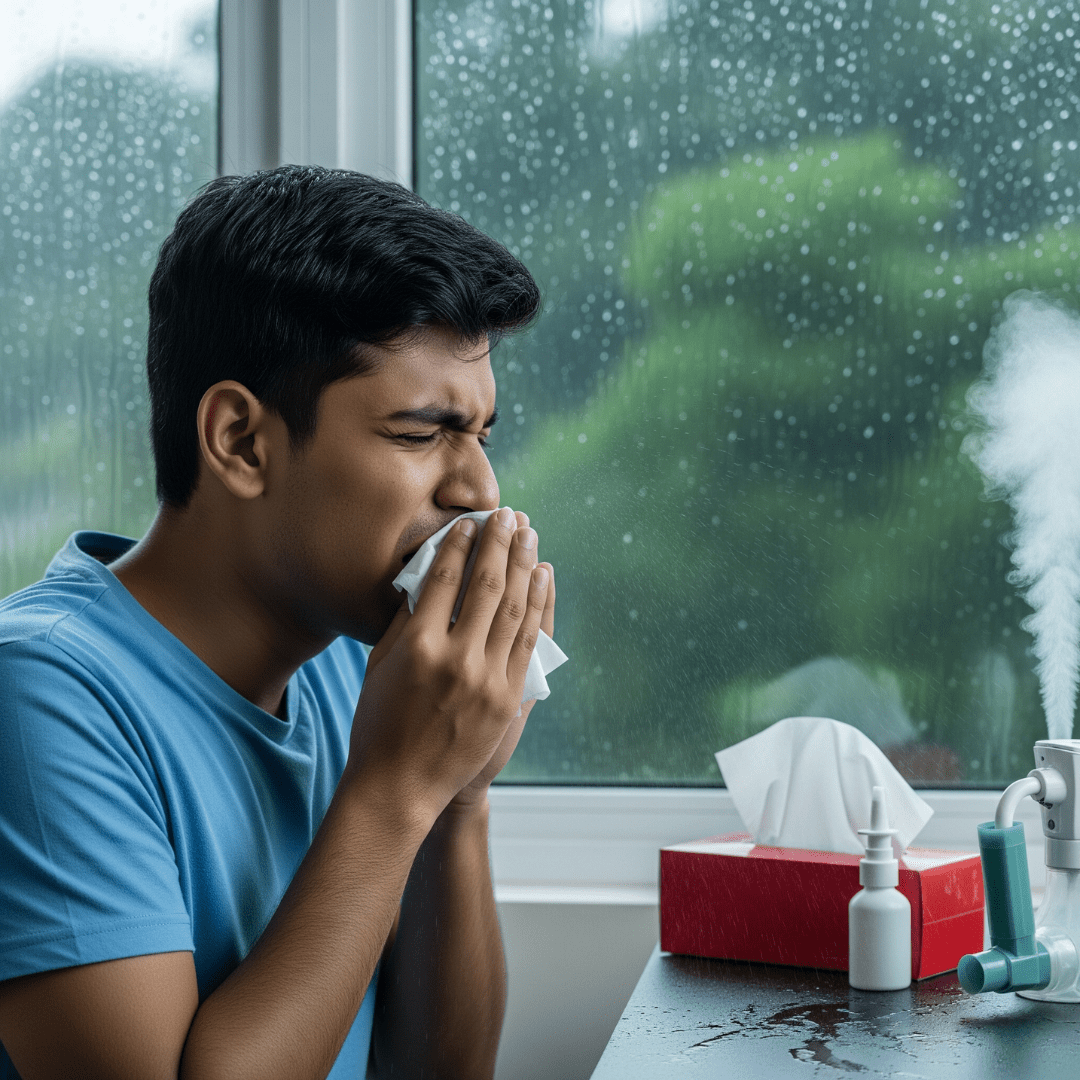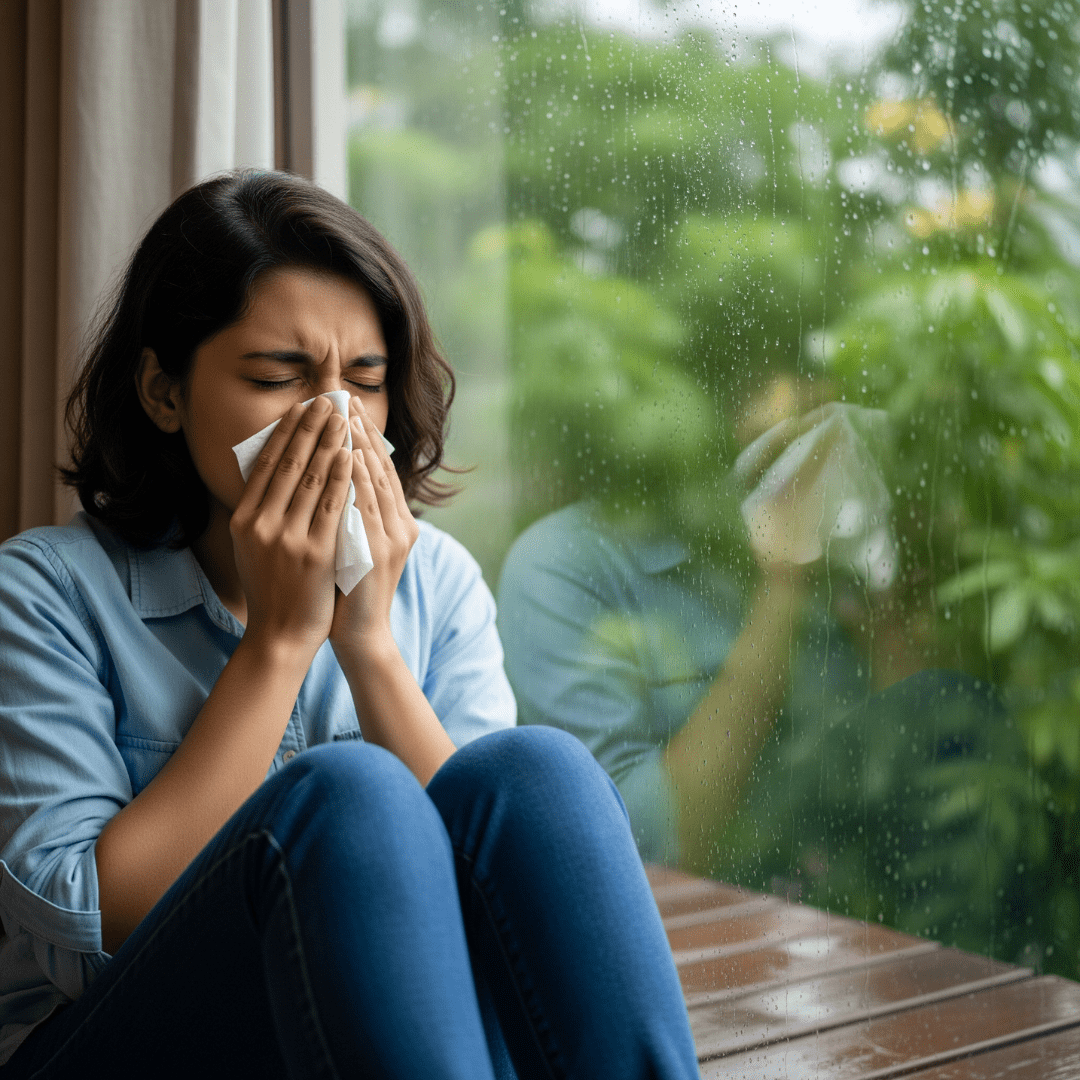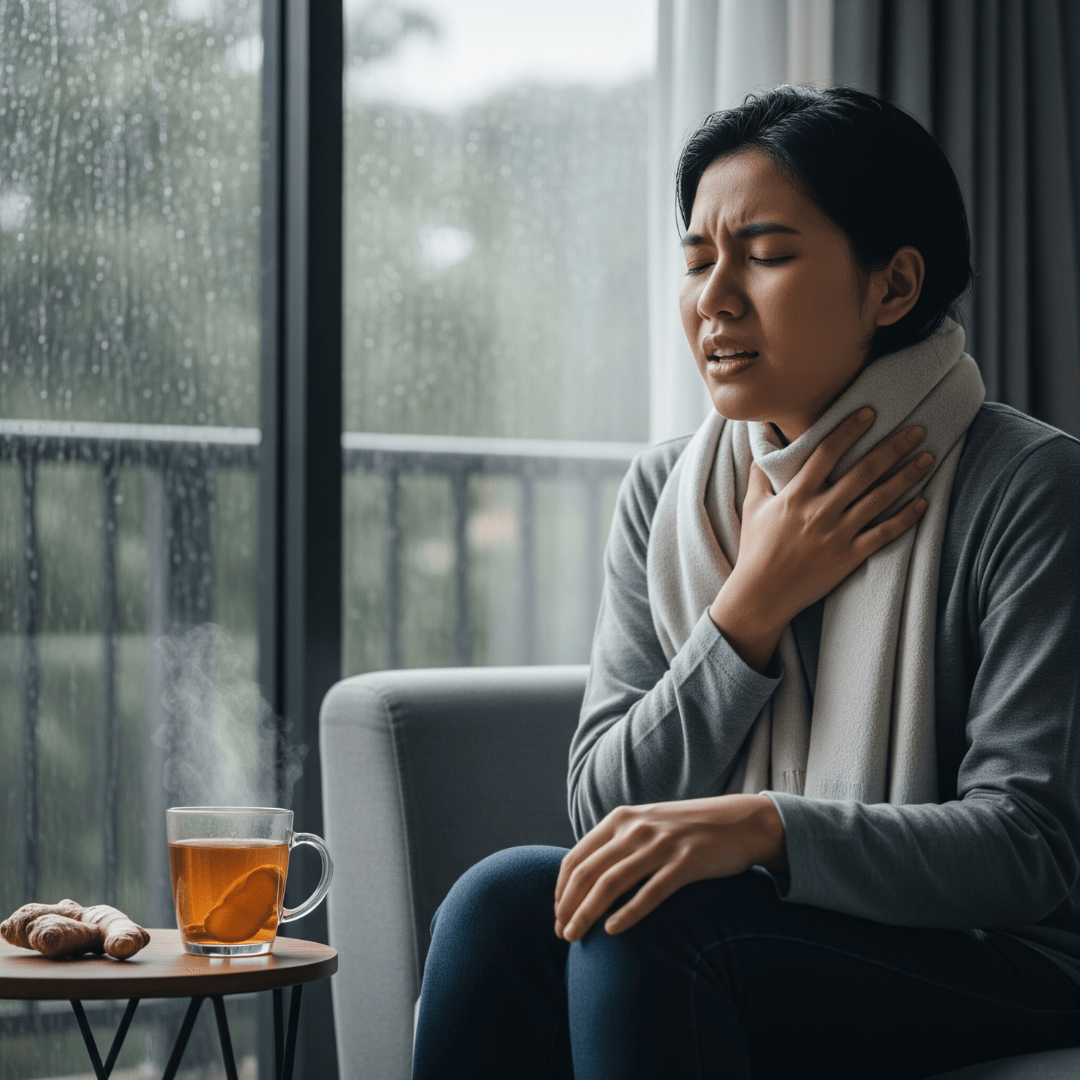As the monsoon clouds roll in, they bring much-needed relief from the summer heat. However, the increased humidity and sudden weather changes also create the perfect breeding ground for infections, especially those affecting the ear, nose, and throat (ENT). For many, this season is synonymous with sneezing fits, sore throats, blocked ears, and sinus discomfort.
Understanding common ENT problems during the monsoon and knowing when to seek medical help can go a long way in preventing complications and ensuring faster recovery.
1. Sinusitis and Nasal Congestion
The damp, humid air can trigger or worsen sinus infections, especially in individuals prone to allergies or chronic sinus issues. You may notice symptoms such as:
- Nasal blockage or runny nose
- Pressure around the eyes or forehead
- Headaches and post-nasal drip
When to Seek Help:
If symptoms persist for more than 10 days or are accompanied by fever, it could point to a bacterial infection. In such cases, it’s wise to consult a sinus specialist in Nagpur for proper diagnosis and treatment.
2. Throat Infections and Tonsillitis
Sudden temperature changes — such as drinking cold beverages after getting drenched — can lead to throat infections or tonsillitis. Symptoms might include:
- Sore throat
- Pain while swallowing
- Swollen tonsils or neck glands
When to Seek Help:
Most minor cases resolve with rest, but persistent or recurring symptoms may need attention. If you’re experiencing frequent episodes, it may be time to visit an ENT doctor for tonsillitis in Nagpur.
3. Ear Infections
Humidity and trapped moisture during the rainy season can cause outer or middle ear infections, especially among children. You might feel:
Watch out for:
- Ear pain or discomfort
- Itching or discharge from the ear
- Temporary hearing loss
- A feeling of fullness or blockage
When to Seek Help:
If any of these persist, it’s best to see an ENT specialist for ear infections to prevent complications like a perforated eardrum.
4. Allergic Rhinitis
Monsoon air carries mould spores and pollen, triggering allergic reactions in many people. Allergic rhinitis presents with:
- Constant sneezing
- Itchy or watery eyes
- Runny or stuffy nose
- Fatigue
When to Seek Help:
If your allergies are interfering with your sleep or daily activities, or if over-the-counter antihistamines aren’t effective, consult a doctor. You may need allergy testing or a prescription treatment plan.
5. Laryngitis and Voice Strain
The damp environment and viral infections can also affect your voice box, causing laryngitis. This results in:
- Hoarseness or voice loss
- Throat pain
- Dry cough
When to Seek Help:
If your voice doesn’t return to normal within 10 days, it’s advisable to consult a voice and throat specialist to rule out other causes.
Staying Ahead of ENT Issues During Monsoon
Simple Precautions You Can Take:
- Avoid getting drenched—carry an umbrella and dry off quickly if wet.
- Use a dehumidifier at home to prevent mould growth.
- Drink warm fluids and avoid chilled beverages.
- Maintain hygiene by washing your hands frequently and avoiding touching your face.
- Avoid allergens—keep your home clean and dust-free.
Monsoon-related ENT problems are common, but they don’t have to disrupt your routine. While many symptoms resolve with rest and basic care, don’t ignore persistent or severe issues. Early diagnosis and treatment by an ENT specialist can prevent complications and speed up recovery.
If you’re facing any of the symptoms mentioned above, especially those that linger or worsen, it’s best to consult an ENT Doctor without delay.





